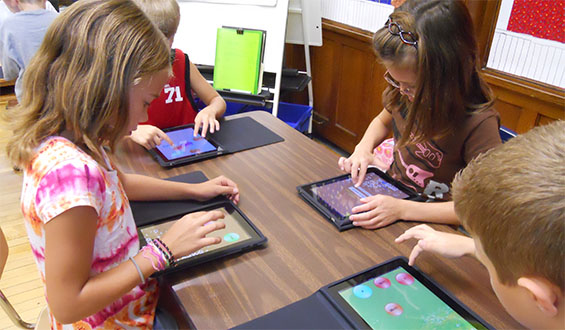When the first ringer rings on the new scholarly year in September, a portion of the district’s schools will have gotten an advanced makeover. Whether its facilities wide broadband rewiring or fresh out of the box new laptops, provincial schools are grasping computerized classrooms, even as some of them battle with the logistics of executing them.
“The machine has changed the way we instruct,” says Pam Clarke, the new leader of the Doane Stuart School in Rensselaer, an early youth through evaluation 12 free school.
With each possible truth just a Google seek away, virtual classrooms that give genuine degrees, and kids significantly more mechanically canny than the grown-ups who show them, the conventional front-confronting, pen-and-paper classroom is getting to be progressively, well, old fashioned.
Clarke, 69, recalls — as numerous grown-ups perusing this will — remembering realities and dates and sitting through long addresses by teachers or school educators who rambled on while “understudies [sat] bowed over, recording irately attempting to take everything the instructor was stating.”
Those days, says Clarke, are over. By September, she says, the noteworthy block structures that make up the beautiful, 24-section of land yard, will be rewired so that each classroom is Wifi joined.
“What we have to do now,” says Clarke, “is show youngsters how to utilize the engineering and how to make it serious, and, particularly to start with, demonstrate to them proper methodologies to observe what’s value taking a gander at.”
The idea of a cutting edge classroom is in accordance with the objectives of training pioneers and policymakers the nation over as the competitiveness of tablets and netbooks and upgrades in Wifi velocities and network proceed to definitely change the way understudies learn and instructors educate.
Financing, through projects, for example, the Federal Communication Commission’s E-rate activity, which gives high velocity broadband integration to schools regardless libraries battling with dial-up or overall insufficient Internet rates, is making the change conceivable.
The FCC voted in July to redesign E-rate because of President Obama’s call prior this late spring to bring to America’s schools and libraries “cutting edge, high-limit broadband.”
In the interim the U.s. Branch of Education’s National Education Technology Plan in 2010 approached instructors “to power innovation to make captivating, pertinent and customized learning encounters for all learners.”
America is at a tipping point, as per the Leading Education by Advancing Digital (LEAD) Commission, a not-for-profit built to decide how engineering can help change instruction in America. “There will be individuals discussing this a long time from now, [looking at] how we took care of it when society changed,” says Mark Eisenhardt, chief of innovation at the Albany Academies.
Notwithstanding the push, then again, coordinated classroom innovation is not without its faultfinders.
Our cellphones, laptops and tablets, composes Dan Rockmore in a late New Yorker article, “are stages for play and standardizing; it bodes well, then, that we would approach those gadgets as amusement and talk machines, as opposed to as learning entries.”
One-third of rudimentary teachers overviewed in a late survey say they utilize diversions as a part of their classrooms to expand engagement and location distinctive learning styles. “These amusements prime and after that adventure the client’s ‘impulse circle,’ a recognized behavioral modality joined to addictive conduct,” Rockmore proceeds in the article, “The Case For Banning Laptops in the Classroom.”
At Christian Brothers Academy in Albany, teachers take a measured methodology, says head of school James Schlegel.
“There is engineering in every classroom for educator presentation, we have machines and advanced projectors in every room, and the majority of our educators have ipads for keeping up records and conveying,” says Schlegel. “Anyhow all through the school, while direction is going on, we don’t have understudies with any electronic gadgets.
